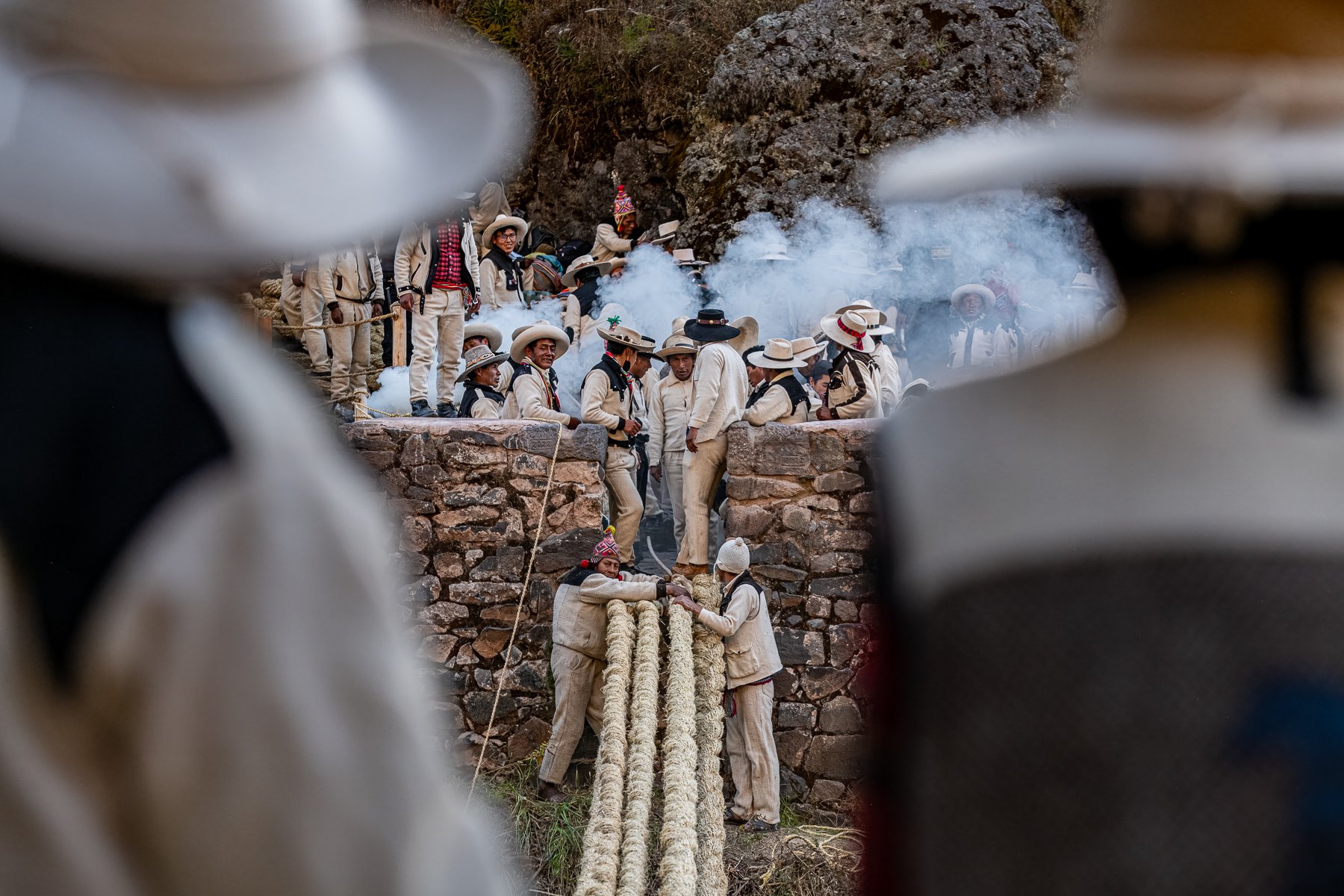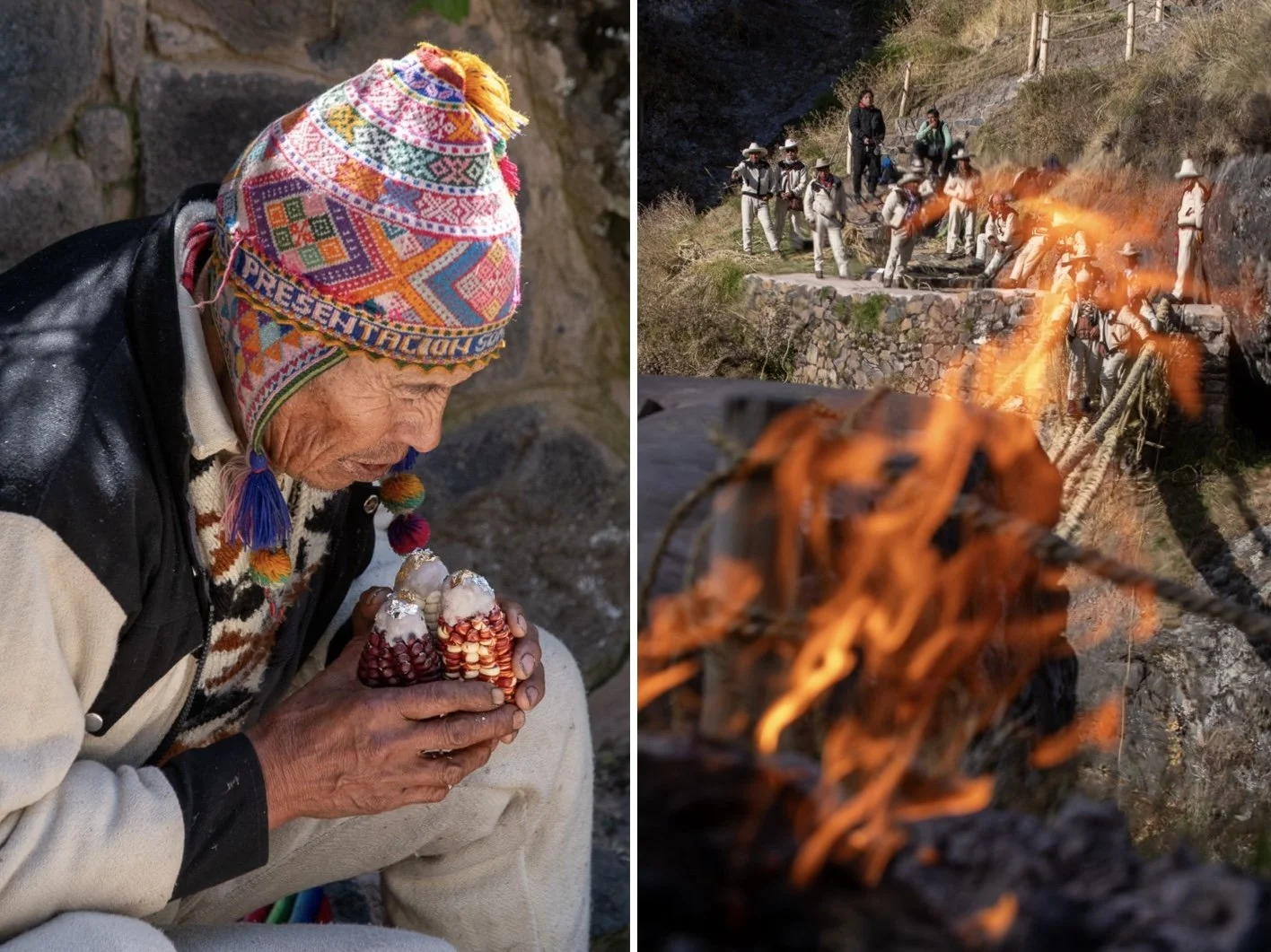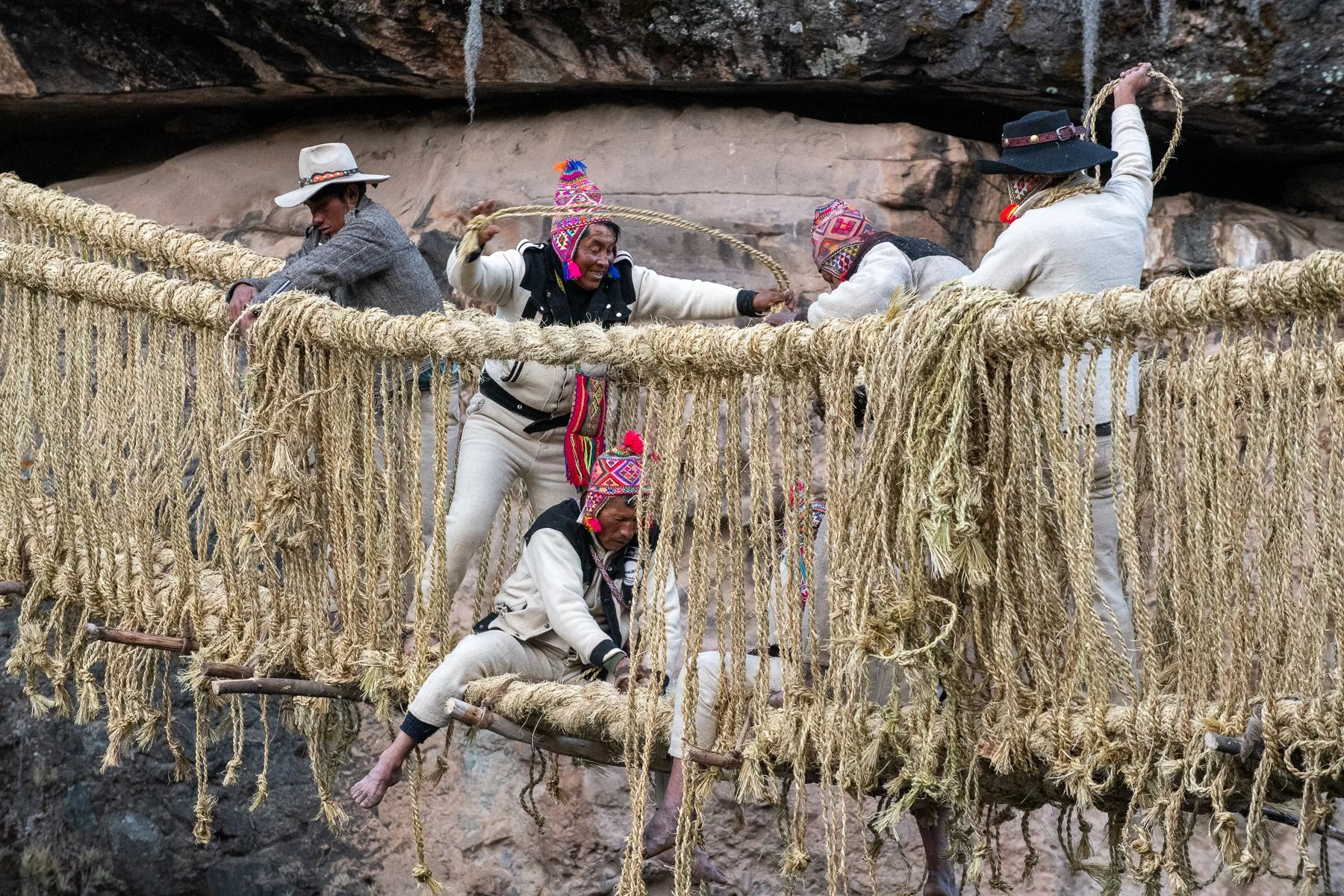Q’eswachaka - The Last Inca Bridge
After completing the pilgrimage to Qoyllur Rit’i, I spent a day photographing the Corpus Christi celebrations in Cusco, then packed my bags and set off for the Q’eswachaka festival. The festivities are non-stop here throughout June and July. It is exhausting.
To be honest, I was not all that interested in the Corpus Christi celebrations, and I needed time to regroup, but it was important for me to at least scout it for next year and get a few photos. However, I was very much looking forward to getting to Q’eswachaka so I mustered my energy and set out again.
I visited the festival in 2014 on a previous trip to Peru and was fascinated by it. In fact, it was partially responsible as an impetus for this project. The festival focuses on the rebuilding of a rope bridge over the Apurimac River in an area where a gorge makes crossing difficult.
There were a multitude of these rope bridges throughout the Andes during the time of the Incas. When the Spanish conquistadors waged war upon them, the Incas retreated to their formidable strongholds deep in the mountains. As a last resort, the bridges were set ablaze in a final, unsuccessful attempt to halt the Spanish onslaught.
Every year since then, members of the surrounding communities in the Quehue district come together to rebuild the bridge. Q’eswachaka is now the last remaining of these once prolific and impressive rope bridges. The rebuilding of the bridge helps maintain a strong social fabric between the communities and keeps the knowledge of the bridge reconstruction intact as it is passed along through the generations.
The reconstruction takes place every June after the rainy season and begins with the harvesting of q’oya, which is a local grass that is extremely hardy and malleable. It is soaked in water for approximately three days and then pounded with rocks to make it pliable. It is then woven into ropes and six large cables are constructed from these for the main supports of the bridge. Smaller strands are woven for the remaining construction and stalks from shrubs are cut to lay down for the flooring of the bridge.
The entire process takes about ten days and is completed collectively by all the community members. The weaving of the ropes is done by women and children and the construction of the bridge is completed by men. Gender roles are strongly defined and make up an aspect of the culture that can be difficult to accept as an outsider.
All of the labour and materials are contributed by the community members. There is no money involved in the reconstruction. This reconstruction along with many other projects and tasks are done using what is called Minca, which means “communal labour.”
Capitalism did not exist for the Incas, and that socialist-like mindset around economics and politics is still embedded in the collective consciousness of the Quechua people today. This mindset is at odds with the ruling class in Lima and with greater globalization. It is at the heart of much of the friction and the large-scale protests here in Peru (which have returned, incidentally).
The Paqo (Andean Priest) oversees the entire process and prays to the Apus (mountain deities) while keeping the sacred fire going. He also sacrifices a sheep to appease the Apus so they will bring good blessings to the people.
The Paqo and other leaders welcomed me in and allowed me to partake in a K’intu (offering) ceremony to Pachamama (Mother Earth). They have invited me to return again next year so I can participate and capture more of the process which I am already looking forward to.
I was also offered another place to stay next year which is more than welcome. Although I enjoyed staying with Eduarda and her esposos (llama husbands), I am guessing next year’s place will be more comfortable than the concrete floor I slept on with mud and excrement-covered sheepskins.
It will also be much closer to the reconstruction and festivities, which are significant. Once the bridge is completed, a fiesta is held to celebrate with music, dancing, and drinking… always music, dancing, and drinking. It could be a bit of a stretch, but it just might be the reason I love this place so much. I don’t know, just a hunch.
MB










